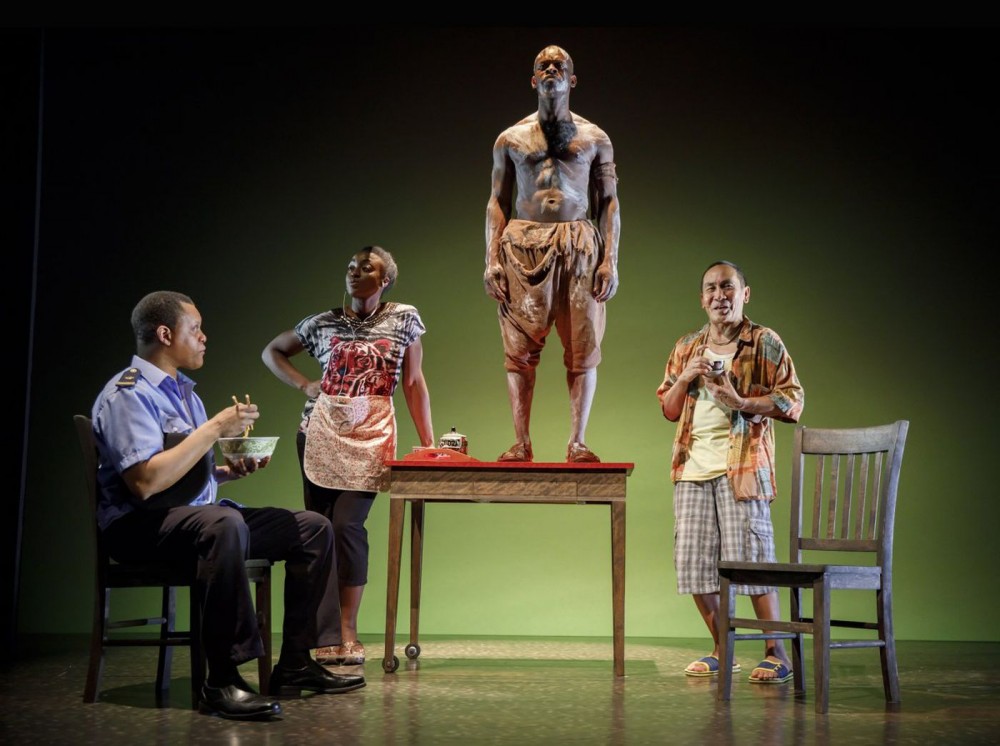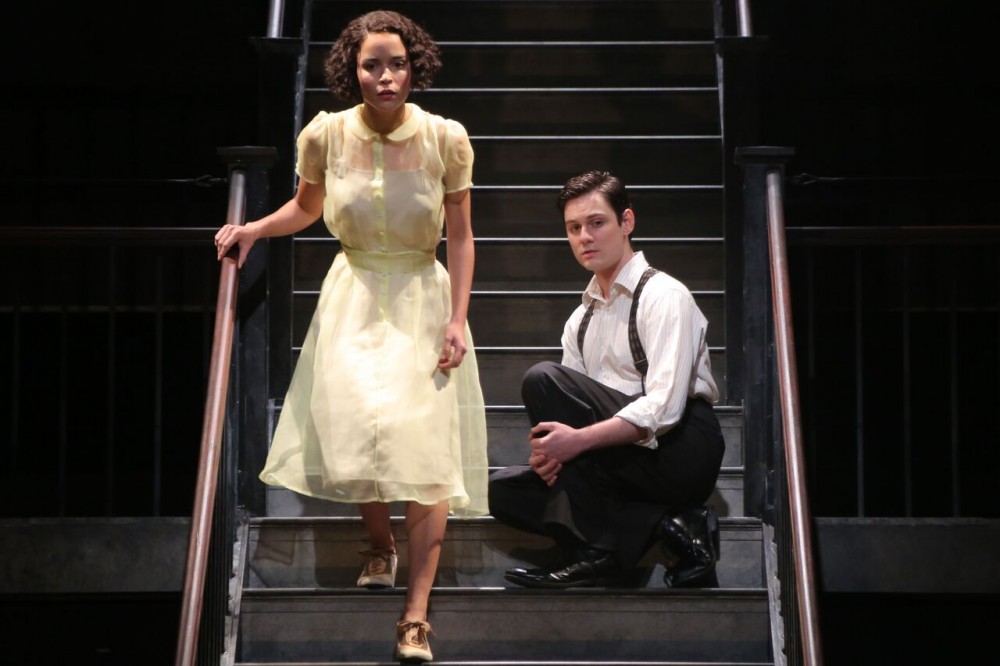by Carol Rocamora
A magnificent specter is stalking the stage of the Public Theatre. It’s the ghost of a king called Mlima, whose domain was once the Kenyan wilds. He’s an elephant, you see – and a majestic one. And he reigns supreme – even in death – in a stunning new play called Mlima’s Tale.
Lynn Nottage is an American playwright with a social conscience and a gift for identifying urgent issues of the day. Her recent plays Ruined (2007) and Sweat (2015), both Pulitzer Prize winners, deal respectively with the issues of enslavement of women in Central Africa and the disenfranchised working class in America.
And now she’s tackled another moral issue: the illegal ivory trade that endangers the future of wild elephants in Africa.
In this taut parable of a mere eighty minutes, we meet Mlima (Sahr Ngaujah) in scene one, delivering a poetic introduction. “If you really listen, our entire history is on the wind,” he alerts us, moments before he’s slaughtered by a poacher. In the ensuing, interlocking scenes (each poetically titled, Brechtian style), his tusks will be smuggled out of Kenya, through Viet Nam and Malaysia, changing corrupt hands along the way, until the tusks finally end up displayed in a wealthy collector’s drawing room.
The glory of Mlima’s story is how Nottage and her gifted director, Jo Bonney, tell it in theatrical terms. Mlima is onstage throughout, silent, haunting scene after scene, like a spirit in limbo who cannot be set free. Dressed only in a loincloth, Mlima slathers his (dead) body with white paint (an African ritual), which he also smears on everybody who comes into contact with his stolen tusks. The metaphor is clear – all are complicit in the crime against the wildlife we exploit for profit and greed.
Sahr Ngaujah (of Fela fame) is a magnificent Mlima. He writhes his stately body in dance/theatre style, representing the spirit of the slaughtered animal. On Riccardo Hernandez’s bare set and backdrop lit by Lap Chi Chu, all nature responds vividly to Mlima’s fate with color and light. The story is underscored by a musician (Justin Hicks), stage right, with voice, electronics and percussive instruments. One of the more horrifying sound effects comes when Mlima’s tusks are carved. Mlima’s body writhes in pain and protest against the defamation.
Three other actors – Kevin Mambo, JoJo Gonzalez, Ito Aghayere – play multiple roles with precision and virtuosity – including a poacher, a park warden, a corrupt Kenyan official, an Asian businessman, a ship captain, a collector, and others.
“Run! Run!” Mlima cries to his beloved in the final moments of the play, warning her of our impending pursuit. Ultimately, Nottage’s powerful parable extends beyond the specifics of illegal ivory trading. It reminds us that we are citizens of one planet, and that we are all exploiting our natural environment. Or, to translate it into Nottage’s brilliant theatrical language: there’s a smear of white paint on us all.
Photos: Joan Marcus
Mlima’s Tale, by Lynn Nottage, directed by Jo Bonney, at the Public Theater until June 3.
























